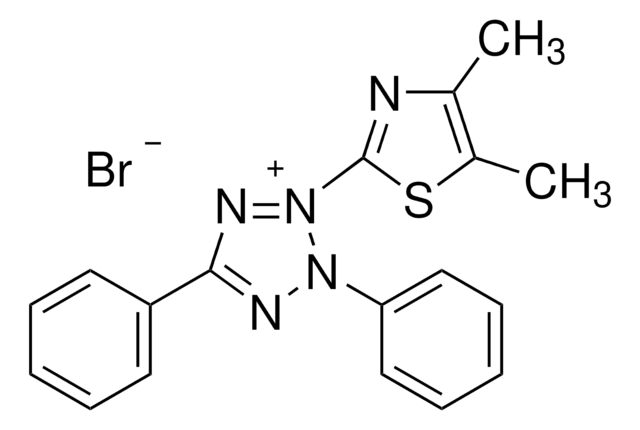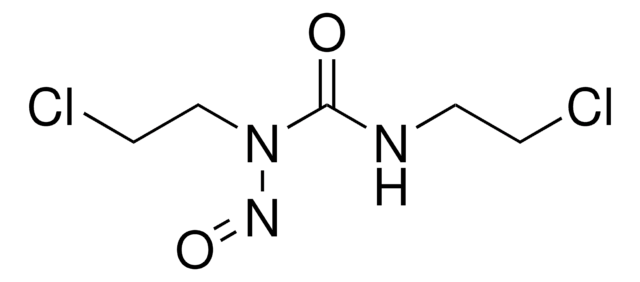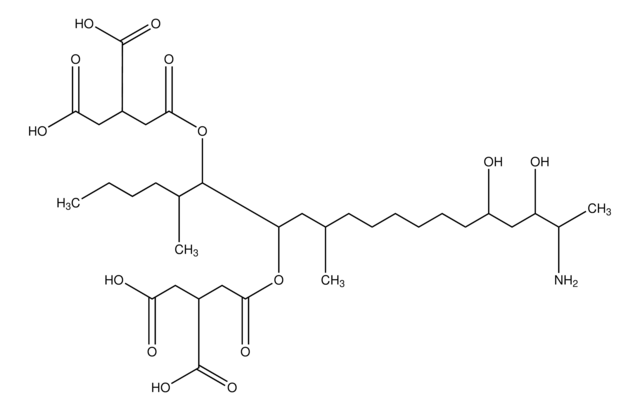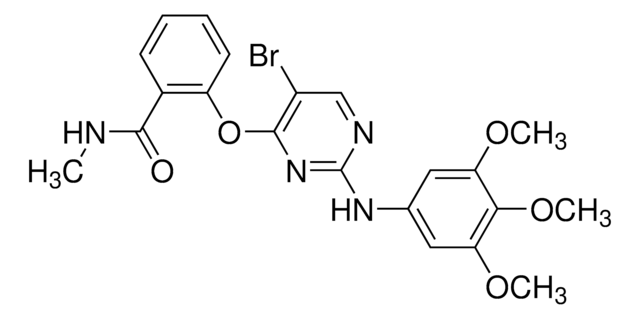M1177
Myriocin
from Mycelia sterilia, ≥98% (HPLC), powder, immunosuppressant
Synonym(s):
(2S,3R,4R,6E)-2-Amino-3,4-dihydroxy-2-(hydroxymethyl)-14-oxo-6-eicosenoic acid, ISP-I, Thermozymocidin
About This Item
Recommended Products
Product Name
Myriocin from Mycelia sterilia, ≥98% (HPLC), powder
Quality Level
Assay
≥98% (HPLC)
form
powder
color
off-white
solubility
methanol: 2 mg/mL
storage temp.
2-8°C
SMILES string
CCCCCCC(=O)CCCCCC\C=C\C[C@@H](O)[C@H](O)[C@@](N)(CO)C(O)=O
InChI
1S/C21H39NO6/c1-2-3-4-10-13-17(24)14-11-8-6-5-7-9-12-15-18(25)19(26)21(22,16-23)20(27)28/h9,12,18-19,23,25-26H,2-8,10-11,13-16,22H2,1H3,(H,27,28)/b12-9+/t18-,19+,21+/m1/s1
InChI key
ZZIKIHCNFWXKDY-GNTQXERDSA-N
Related Categories
Application
Biochem/physiol Actions
Signal Word
Danger
Hazard Statements
Precautionary Statements
Hazard Classifications
Acute Tox. 3 Oral
Storage Class Code
6.1C - Combustible acute toxic Cat.3 / toxic compounds or compounds which causing chronic effects
WGK
WGK 3
Flash Point(F)
Not applicable
Flash Point(C)
Not applicable
Personal Protective Equipment
Choose from one of the most recent versions:
Already Own This Product?
Find documentation for the products that you have recently purchased in the Document Library.
Customers Also Viewed
Our team of scientists has experience in all areas of research including Life Science, Material Science, Chemical Synthesis, Chromatography, Analytical and many others.
Contact Technical Service

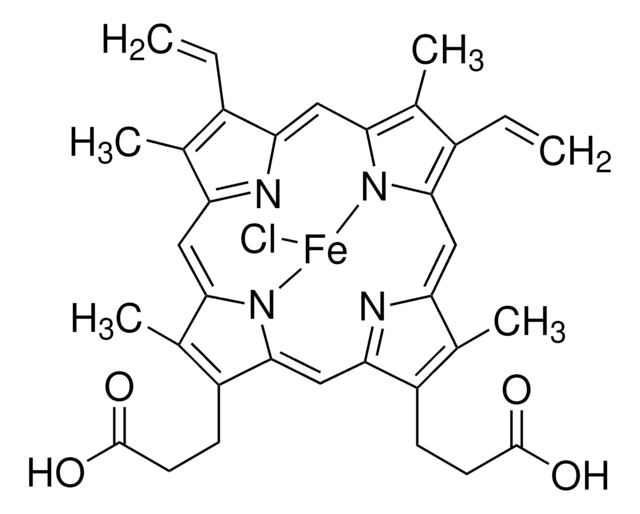
![GT-11 N-[(1R,2S)-2-hydroxy-1-hydroxymethyl-2-(2-tridecyl-1-cyclopropenyl)ethyl]octanamide, powder](/deepweb/assets/sigmaaldrich/product/structures/273/803/ce1cea05-f095-4ba3-9e0a-bb706e782297/640/ce1cea05-f095-4ba3-9e0a-bb706e782297.png)





